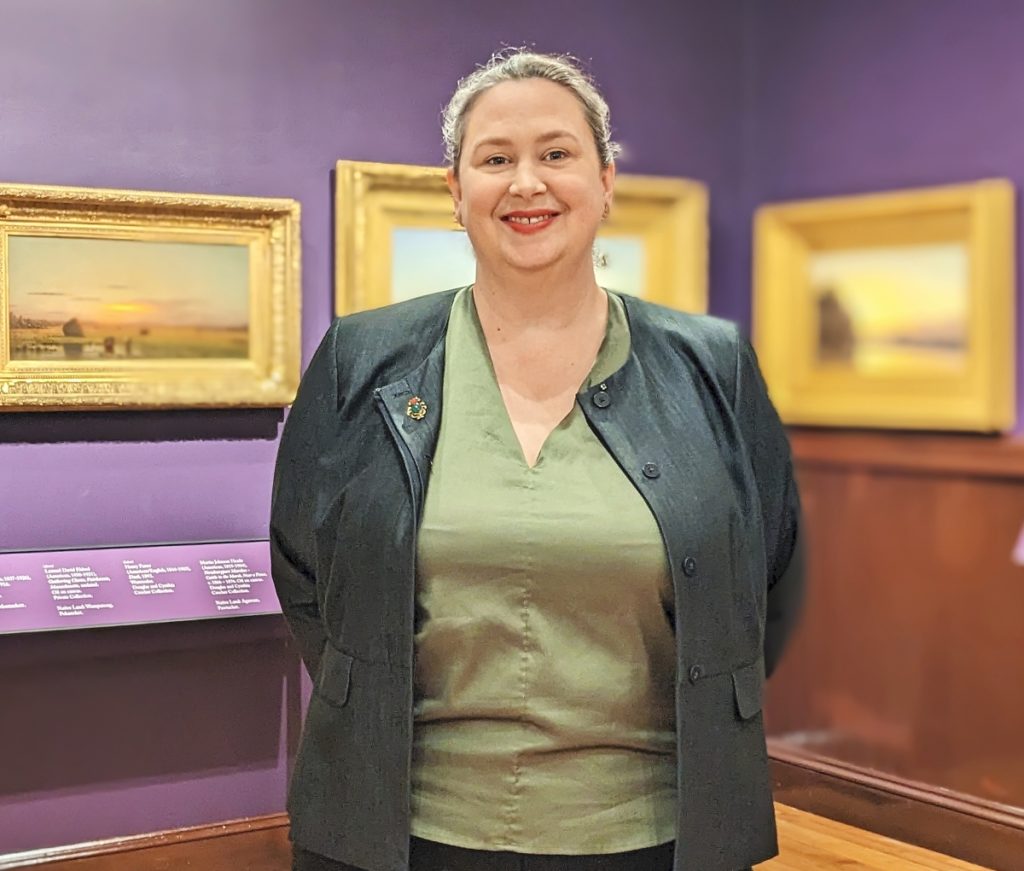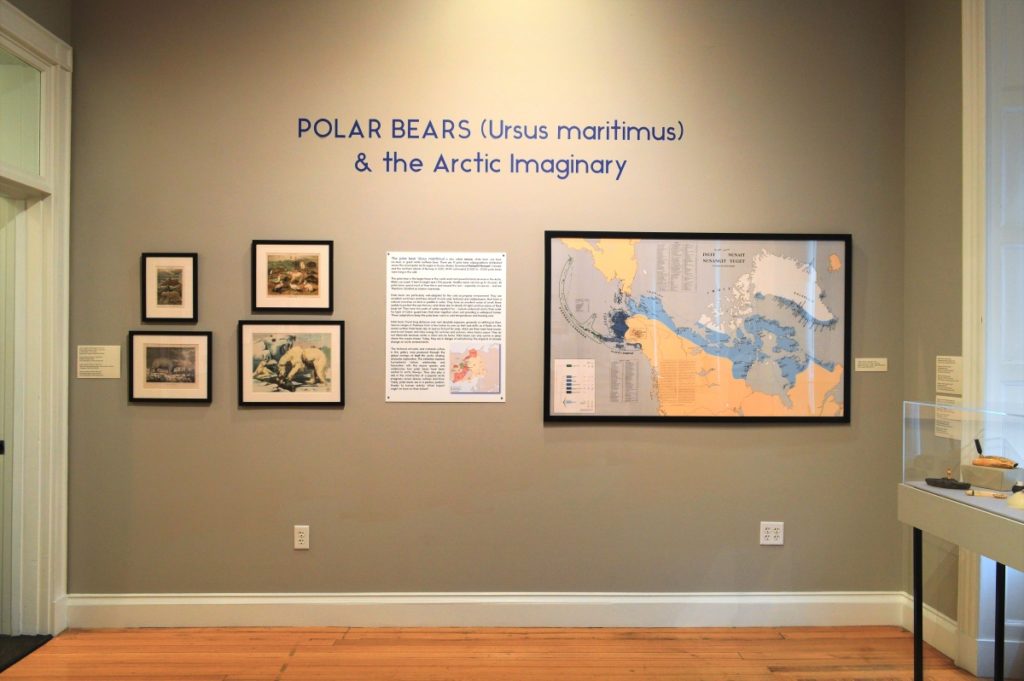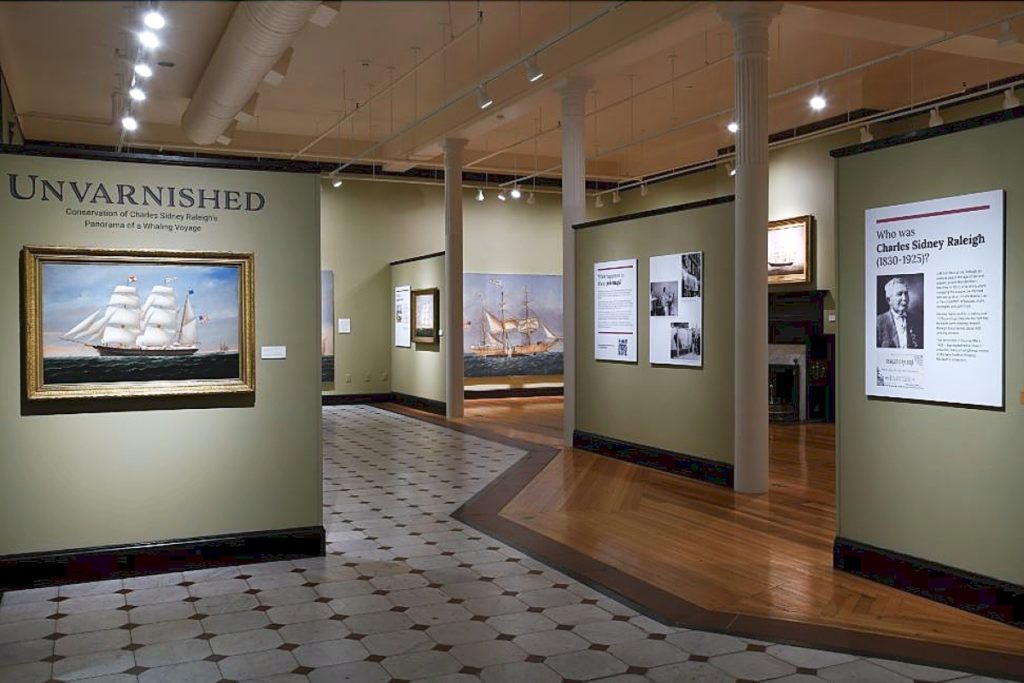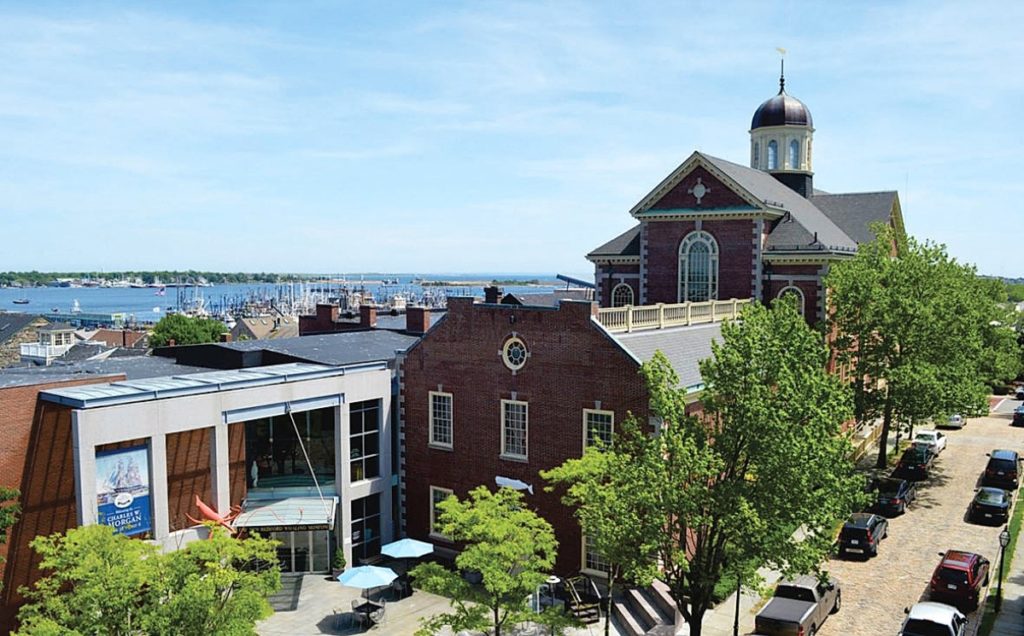
Chief curator Naomi Slipp arrived at the New Bedford Whaling Museum (NBWM) in August 2021 – just as the organization was beginning to work its way out of the pandemic – from a role as an associate professor of art history at Auburn University. Having grown up on the water in Bristol, R.I., and with family from maritime Canada, she is a perfect fit for the museum whose focus is on art, history, culture and science. She shares with our readers her interesting perspective on how to make maritime history relevant to the modern conversations we are having about race, gender and the environment.
As the Douglas and Cynthia Crocker endowed chair for the chief curator and director of museum learning at the NBWM, what are your responsibilities?
Answering to the president and chief executive officer, I oversee operations related to collections, curatorial and museum learning across the museum. I manage a dedicated team of 14 staff members, whose areas of expertise cover a wide range of special topic areas and museum functions, and a corps of about 100 volunteers, who share a deep commitment to the New Bedford Whaling Museum and its mission. One challenge in my job is ensuring that people understand just how big we are and what our mission covers. We are not just whaling!

A current temporary exhibition, “Polar Bears (ursus maritimus) and the Arctic Imaginary,” is a collection show and draws together original artworks, photographs, carvings and material culture depicting or made from polar bears to explore humankind’s fascination with and relationship towards this vaunted and elusive species.
Describe some of the goals of the museum’s five-year strategic plan.
Museum priorities were set through our 2020-2025 strategic plan to Welcome, Engage, Steward and Thrive. Concrete areas for engagement and measurable goals were identified across museum operations that would align with these four themes.
One goal of the museum’s strategic plan is to increase our platform related to environmental stewardship and other critical issues. In line with this, we have expanded our work around cataloging existing natural history collections. This has led to some exciting discoveries – including a polar bear skull and an engraved fungus specimen, and the DNA testing of sawfish specimens to identify species in collaboration with a university laboratory.
A strategic second goal is to assess our narratives, history and collections through the lens of diversity, equity, accessibility and inclusion (DEAI). In the past five years, NBWM has made strong efforts in celebrating and sharing the diversity of the regional community and engaging broader publics in that effort. This includes broad community engagement around exhibition planning with institutional partners, stakeholders and community members.
Another goal I would like to highlight are the steps we are taking to increase and enhance access to our collections. When I arrived at the museum, we were using a collections management system with a poor web interface and public search function. A major drawback to the system were challenges with appending image files to records and making them accessible to the public. We elected to undergo a CMS migration, which would enable the adoption of a creative commons license, a dynamic public search platform and downloadable high-res collection images. This is in the early stages – we just completed the discovery phase, and when launched will revolutionize how museum users on the back end and public audiences on the front, access, search and organize our collections.

Slipp curated “Unvarnished,” centered on one of two panoramas in the museum’s collection, Charles Sidney Raleigh’s “Panorama of a Whaling Voyage.”
How is the museum helping to advance knowledge of climate change impacts on marine life, coastal communities and economies?
Many of our exhibitions carry an environmental message, especially relating to climate change and its impacts on ocean ecosystems. One excellent example is the first project I brought to the museum, “Turn the Tide: Courtney Mattison.” An artist and “ocean advocate” in equal measure, Mattison (b 1985) uses her background in marine conservation biology to craft stoneware and porcelain sculptures that address pressing environmental issues relating to ocean health. Her works offer visual interest and meaningful commentary on the well-being of our oceans and their imperiled state. Delicate coral forms appear to grow outward into organic spiraling shapes and then bleach and die before our eyes, poignantly illustrating the widespread and devastating effects of global warming, ocean acidification and pollution on marine species, especially coral and other invertebrates.
How can you make maritime history relevant to modern concerns – race, gender and the environment?
The oceans cover 70 percent of the earth’s surface. Increasingly, cultural historians and scholars in interdisciplinary fields are focusing their attention on the seas and oceans as spaces of meaning. Described as ocean studies or blue humanities, scholarship on the maritime world, littoral zones and ocean geographies and ecologies, often from a non-anthropocentric perspective, is burgeoning. In essence, most argue that the ocean is as much a place as the land.
Most of human history centers around water, or access to it. New Bedford and the surrounding region is no different. Maritime history cuts across many of the major questions and concerns of the contemporary moment. Employment in maritime industries at sea and along our coasts was extraordinarily diverse. For example, US whaling vessels were multicultural spaces for cultural exchange and adaptation. Crews in New Bedford comprised Azoreans, Cape Verdeans, Pacific Islanders, Native Americans, Black men (both free and escaped enslaved people), working class whites, ethnic minorities and recent British and European immigrants. Self-emancipated formerly enslaved people could parlay maritime knowledge into an escape route and then find maritime trade work in urban centers or freedom on shipboard for three to five years of service in places like New Bedford, which had the largest free Black community outside Boston. We explored this story in the recent exhibition, “Sailing to Freedom: the Maritime Dimensions of the Underground Railroad,” co-organized with colleagues from UMass-Dartmouth and the New Bedford Historical Society.
In all of this, exhibitions can be a vehicle for asking thoughtful questions and engaging in dialogue. The museum can and should, in my mind, be a space for these discussions. And with NBWM’s unique focus, vast collections and 22 permanent and temporary galleries, we are a great space for engaging these critical questions around making maritime history relevant to today.
You’ve got two book projects underway. What are they about?
My first book project, The Art of the Body: Medicine and Anatomy in American Culture, 1800-1880, is drawn from my dissertation (awarded a “Pass with Distinction” and finalist for the Zuckerman Prize) and investigates the ways that individuals from the disciplines of art and medicine starting in the 1800s jointly established pedagogical models for anatomical instruction, developed professional agendas and identities through institutional and artistic endeavors and shaped cultural constructions of the human body (ideal and aberrant) as both an artistic subject and a biological organism.
My second book project, Casting the Net: Canadian-American Fisheries in Gilded Age Art and Culture, is in the early stages of development and adopts an eco-critical approach to explore the effects of international fisheries politics on North American art making and culture from 1870 to 1900.

The New Bedford Whaling Museum was founded in 1903 as the Old Dartmouth Historical Society. It has been collecting for 120 years, and its collection numbers more than one million items.
What are some of your memories of growing up in coastal Rhode Island?
I have fond memories of going to the beaches in Rhode Island, a lot. I was lucky that my mother was an academic and so summers were filled with day trips to Newport or Cape Cod. I had an idyllic coastal New England childhood in many ways, with clambakes and beachcombing, seashell collecting, quahogging, crabbing and boating. Hiking along bluffs, watching osprey teach their young how to fly, carving great circles in the sky and chirping for encouragement. I was a docent at a local arboretum and house museum in my teens: Blithewold, which has incredible grounds and a sweeping ten-acre lawn that rolls straight to the harbor. We had close friends who lived on an island in the bay; you had to take the ferry from downtown to visit them. I still love going to the beach. I am a strong swimmer and am happiest floating on the waves. I don’t like to nap on the sand; I want to be in the water.
It is only more recently that I have realized, as I think is the case with many Rhode Islanders, how much the histories around us were erased and rewritten. The town I grew up in was the summer residence for the Pokanoket tribe of the Wampanoag nation. As a kid, we would go, in a summer camp hosted by Haffenraffer Museum of Anthropology, to see the Seat of Metacomet. But I was wholly ignorant as to the historical meaning of that place and the sacredness of that site to contemporary Indigenous communities.
Bristol, where I grew up, is deeply patriotic and is best known for a massive Fourth of July celebration and the longest consecutive parade in the nation. I love the Fourth of July because of it: the parade, carnival, concert and fireworks. But the town is also the historical seat of the DeWolf family, the largest slave-trading family in US history, and the entire town was invested in and profited from the enslavement and trade in human beings and the commodities of the triangle trade.
In the end, I think that maritime histories shape all of us, whether we know it or not. They are in our familial past, as stories of immigration or forced migration; they affect our foodways and material consumption; they are all around us today.
-W.A. Demers




